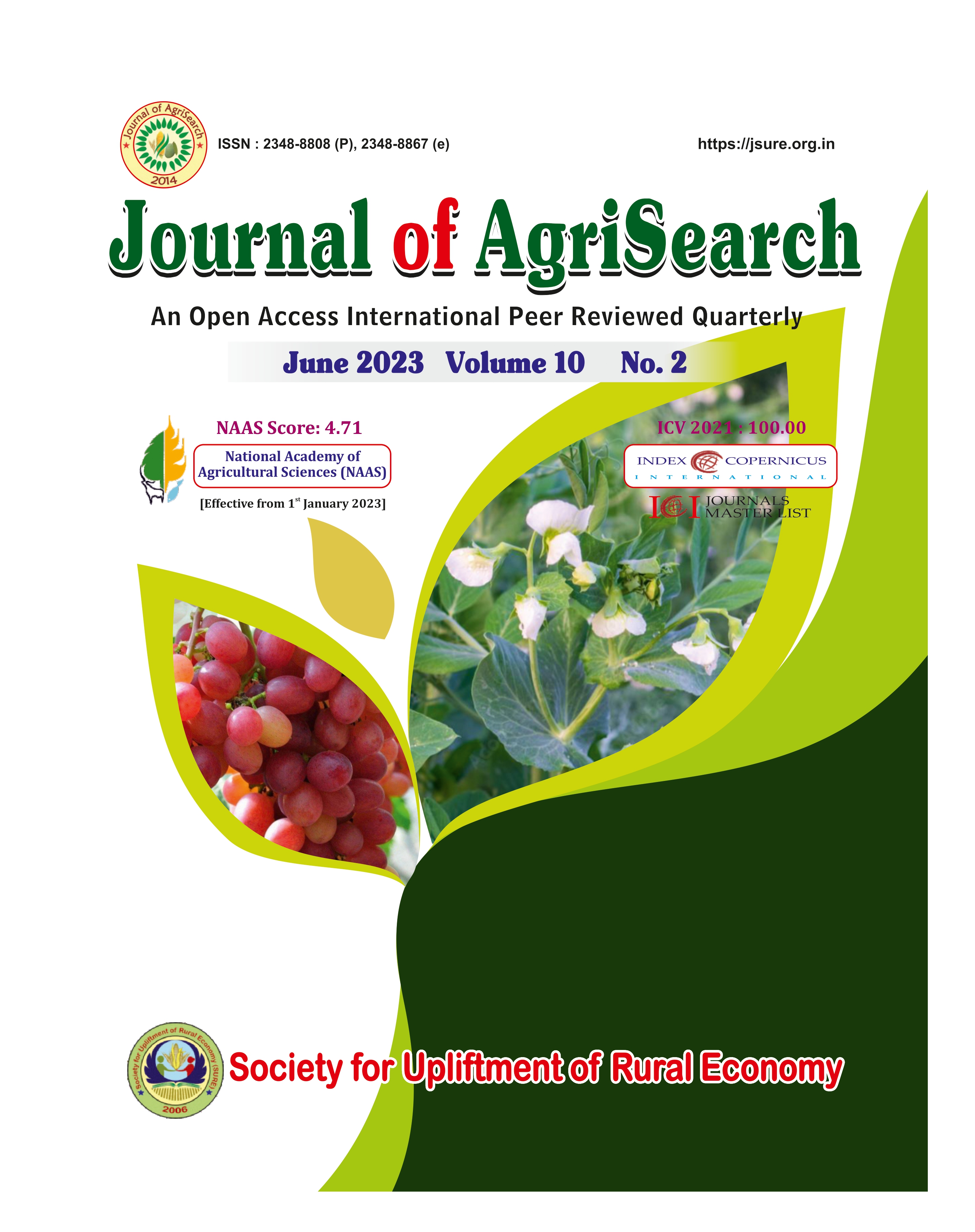Analysis of the Mechanism of Weeding with Rotary Weeding Wheel in Paddy using Dynamic Software
Analysis of Weeding Mechanism using Dynamic Software
DOI:
https://doi.org/10.21921/jas.v10i02.12725Keywords:
Weeding, Puddled soil, Simulate, Density, Coupling stressAbstract
Mechanical weeding in paddy is getting popularized only after dry sowing method i.e., where line sowing is done by tractor drawn seed drill/planter at desired row to row and hill to hill spacing. In the actual operation process in the field, weeding device needed to perform not only efficient weeding but also its effect on quality of tillering in puddled soil to increase the porosity of soil and effectively promote nutrient absorption from the soil. To simulate the soil tillering condition of optimized weeding wheels, the explicit dynamics software LS-DYNA was used to establish the fluid–solid coupling model of weeding wheels and water soil. Based on the working state of the optimized weeding wheel and the agronomic requirements for weeding, the forward speed of 0.58 m/s, the rotating speed of 150 revolution/min and the weeding depth of 50 mm were selected. The density of soil increases significantly after the disturbance of the weeding wheel, which is due to the effect of the tillering the soil layer in the water layer. From the analysis, it was observed that, the weeding wheels greatly disturbed the soil and could bury weeds and churn the soil. In addition, when the weeding wheels moved in the simulated paddy field environment, the mud mixture move freely and the overall coupling stress is low, which indicated that the resistance of the weeding parts was small and the energy consumption of the weeding wheels was low.
References
Bentaher H, Ibrahmi A, Hamza E, Hbaieb M, Kantchev G, Maalej A and Arnold W. 2013. Finite element simulation of moldboard-soil interaction. Soil Tillage Res. 134: 11–16.
Choi KH, Han SK, Han SH, Park KH, Kim KS and Kim S. 2015. Morphology-based guidance line extraction for an autonomous weeding robot in paddy fields. Comput. Electron. Agric. 113: 266–274.
Kotrocz K, Mouazen AM and Kerényi G. 2016. Numerical simulation of soil-cone penetrometer interaction using discrete element method. Comput. Electron. Agric. 125: 63–73.
Liu F, Yang Y, Zeng Y and Liu Z. 2020. Bending diagnosis of rice seedling lines and guidance line extraction of automatic weeding equipment in paddy field. Mech. Syst. Signal. Process. 142: 106-107.
Shinoto Y, Otani R, Matsunami T and Maruyama S. 2020. Analysis of the shallow root system of maize grown by plowing upland fields converted from paddy fields: Effects of soil hardness and fertilization. Plant. Prod. Sci. 24: 297–305.
Yaduraju NT. 2012. Weed management perspectives for India in the changing agriculture scenario inthe country. Pakistan Journal of Weed Science Research 18: 703-710.
Zhang Q, Liao Q, Ji W, Liu H, Zhou Y and Xiao W. 2015. Surface optimization and experiment on ditch plow of direct rapeseed seeder. Nongye Jixie Xuebao/Trans. Chin. Soc. Agric. Mach. 46: 53–59.


